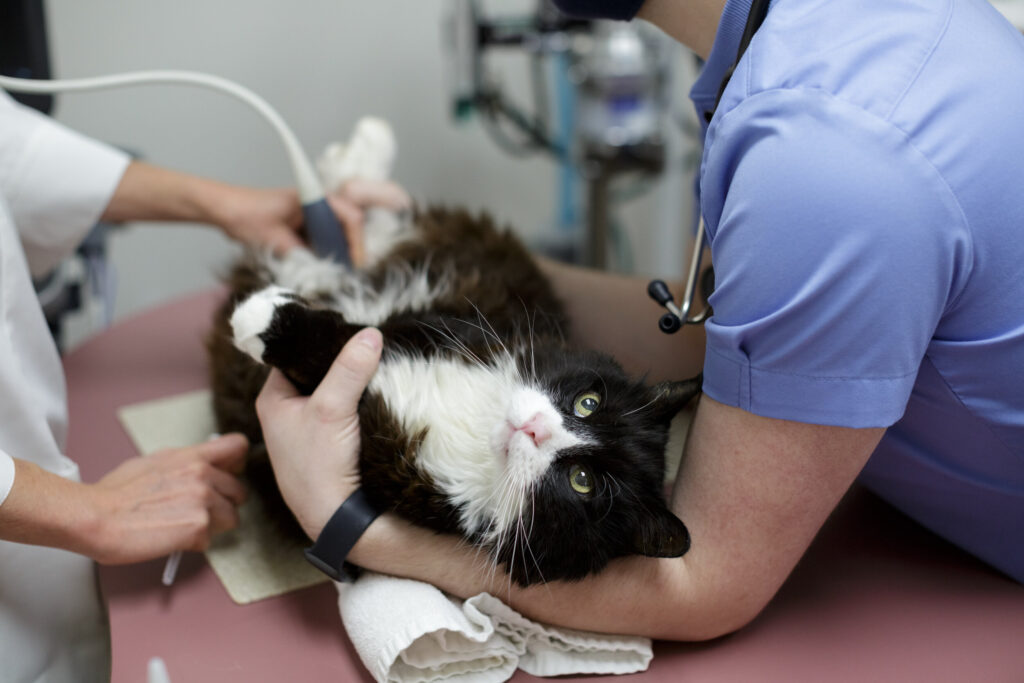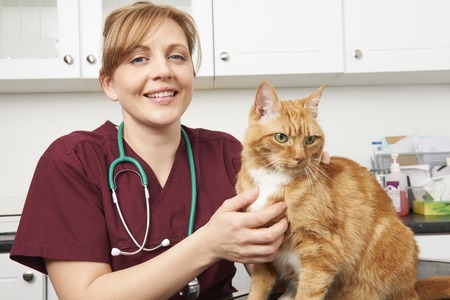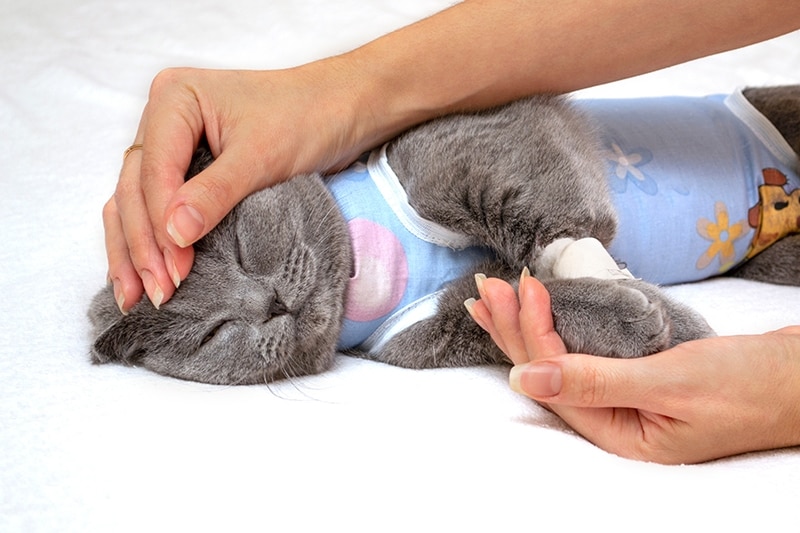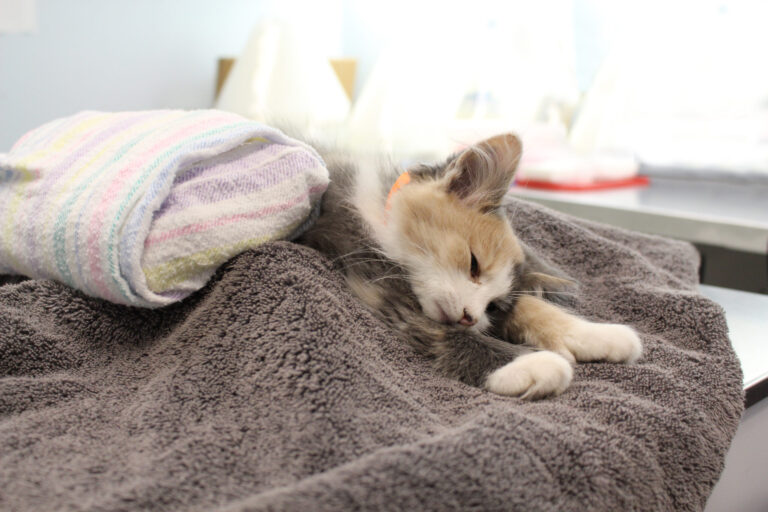After a cat undergoes surgery, it’s not uncommon for them to display heightened activity levels due to factors like the effects of anesthesia or discomfort. To manage this, adhere strictly to the post-operative care instructions provided by your veterinarian. Designate a quiet, comfortable space for your cat’s recovery, ensuring they have a cozy bed and minimal disturbance.
While some restlessness is expected, monitor their activities closely to prevent excessive movements such as jumping or running that could interfere with healing. Consider using a recovery cone or collar to protect the surgical site and discourage licking or biting. If needed, confine your cat to a smaller area or crate to limit their movement.
Provide mental stimulation through toys or activities that engage their mind without requiring physical exertion. Contact your veterinarian promptly if you notice concerning signs or if you’re unsure about managing your cat’s behavior during the recovery period. Always prioritize your cat’s comfort and well-being as they recuperate from surgery.
What factors influence post-surgery activity in cats?

These factors and being attentive to a cat’s behavior post-surgery enables caregivers to identify signs of discomfort or stress, facilitating timely intervention and better management of the cat’s recovery process.
Factors contributing to increased activity levels
Post-surgery, cats may display heightened activity due to various factors. One significant reason is the body’s response to pain or discomfort, prompting restlessness or increased movement as they try to find a comfortable position.
Additionally, some cats might experience stress or anxiety after surgery, leading to increased activity levels as a coping mechanism. Moreover, individual temperament and personality traits can influence how a cat behaves post-surgery, with some being naturally more energetic or curious.
Effects of anesthesia or sedation on a cat’s behavior
Anesthesia or sedation used during surgery can have lingering effects on a cat’s behavior. While most cats gradually recover from the effects of anesthesia, some may experience disorientation, confusion, or altered behavior immediately after waking up.
This could manifest as increased restlessness or unusual behavior such as pacing, vocalizing, or difficulty in coordination. The duration and type of anesthesia used, as well as the cat’s individual response, can influence these effects.
Behavioral changes due to discomfort or pain after surgery
Cats may exhibit distinct behavioral changes when experiencing discomfort or pain following surgery. They might become more restless, pacing around, or excessively grooming themselves. Some cats may vocalize more than usual or display aggression if they perceive any touch or movement near the surgical site as painful.
Furthermore, changes in appetite, altered sleeping patterns, or reluctance to engage in usual activities could indicate discomfort. Recognizing these behavioral changes is crucial to provide appropriate pain management and ensure a smoother recovery for the cat.
How to manage a cat’s activity after surgery effectively?

By combining these steps and being attentive to your cat’s needs, you can effectively manage their activity after surgery, promoting a comfortable and successful recovery process.
Following post-operative care instructions from the veterinarian
Adhering to the veterinarian’s instructions is crucial for your cat’s recovery. These instructions often include administering medications as prescribed, monitoring for signs of complications, and following specific guidelines regarding diet, wound care, and activity restrictions. Compliance with these instructions helps in ensuring proper healing and reduces the risk of postoperative complications.
Creating a conducive recovery environment:
Designate a secluded area in your home where your cat can rest undisturbed. Minimize noise and foot traffic in this space to promote a stress-free environment conducive to healing.
Offer a comfortable bed or soft bedding where your cat can rest comfortably. Limit interaction with other pets or children to prevent unnecessary stress that might hinder the recovery process.
Monitoring your cat’s activity closely:
Cats may instinctively engage in activities that could strain their surgical site. Discourage jumping onto high surfaces or engaging in overly active behaviors that might disrupt the healing process.
These devices prevent your cat from licking, biting, or scratching the surgical area, reducing the risk of infection and ensuring proper healing.
Limiting movement when necessary
Restricting your cat’s movement to a smaller space can prevent excessive activity that could potentially interfere with the recovery process. This confinement helps in ensuring rest and minimal physical exertion.
Providing mental stimulation without physical exertion

Engage your cat in interactive or puzzle toys that stimulate their mind without necessitating physical activity. This mental stimulation can help in keeping them entertained and distracted from their restricted movement.
Seeking veterinary advice when concerned
Be vigilant for any unusual behavior, signs of pain, swelling, discharge, or lack of improvement in your cat’s condition. These could indicate complications that need immediate attention.
If you’re uncertain about managing your cat’s post-operative activity levels or if you observe any worrying signs, contact your veterinarian promptly. Seeking professional advice ensures appropriate measures are taken for your cat’s optimal recovery.
FAQ’s
How long does it take a cat to calm down after being neutered?
Usually, it takes a few days to a couple of weeks for a cat to settle down after being neutered. However, individual recovery times may vary based on the cat’s personality and the procedure.
Can anesthesia make cats hyper?
Yes, it’s possible for cats to display hyperactivity or unusual behavior after being under anesthesia. Some cats may exhibit restlessness or increased activity due to the effects of anesthesia.
Why is my cat more aggressive after neutering?
Post-neutering, some cats might display temporary aggression due to hormonal changes. However, this behavior typically subsides as the cat adjusts to the hormonal changes and the recovery period progresses.
Will a male cat be less aggressive after neutering?
In many cases, neutering can reduce aggressive behaviors in male cats, especially those related to mating, territoriality, or dominance. However, individual behaviors can vary, and other factors might also influence aggression.
Can I hold my cat after spaying?
It’s generally recommended to avoid picking up or holding your cat right after spaying to allow for proper healing and to prevent any accidental stress or injury to the surgical site. Follow your vet’s advice regarding handling your cat post-surgery.
Does spaying calm a cat down?
Spaying can contribute to a more settled behavior in cats. It often reduces behaviors related to heat cycles, such as restlessness and vocalization. However, the calming effect might vary between individual cats.
Final Words
In conclusion, taking care of your cat after surgery is super important. Remember to follow what your vet tells you to do, like giving medicine and watching for any problems. Make sure your cat has a cozy and quiet place to rest at home. Keep an eye on them and try to stop them from doing things that could hurt their surgery spot. If needed, use special collars or crates to help keep them safe.
Also, give them toys or activities that keep their brain busy but don’t need a lot of moving. If anything worries you or if you’re not sure what to do, ask your vet for help. Keeping a close watch and following these steps can help your cat have a smooth and comfortable recovery after surgery.

